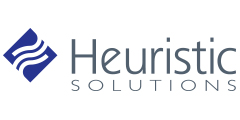Successful auditing for certification management can sometimes be a balancing act: You want to minimize the effort it takes for your practitioners to certify and recertify. You also need to ensure that they are in compliance with your requirements. How do you spell compliance? A-u-d-i-t. Of course, auditing for certification management isn’t done just to ensure compliance. Certifying bodies audit certification applications to:
- Conserve staff resources by reviewing a percentage of applications rather than all.
- Detect or prevent fraudulent submissions.
- Meet accreditation standards as relevant to your profession.
Crucially, audits also help you evaluate applicant buy-in. When audits have a high rate of failure, it’s a sign that higher compliance is needed further upstream.
We tend to see organizations approach auditing one of two ways:
- On application submission, they require only an attestation (and fee), and only ask for additional supporting documentation upon audit selection. Hopefully, the applicant has it saved somewhere!
- On application submission, the practitioner submits all of the documentation upfront. It is then reviewed upon audit. Of course, this means they have to be able to get it into the system via upload, manual entry, or data integration.
For all the reasons you audit, Heuristics can help your organization achieve business objectives within that tension between less up-front documentation and more to do upon audit and more up-front documentation with less required upon audit.
Level of Work During Submission |
Submission: Applicant Effort |
Submission: Applicant Task |
Audit: Staff Task |
Audit: Applicant Effort |
Wait Time |
| Attestation | Low | Indicate you meet the standards and agree to provide supporting documentation if audited. | Ask applicant or other parties to fully document how requirements are met Applicant may not have kept a log, even though they said they did, so they would create one and find the supporting documentation. The audit must wait until documents are provided. |
High | High |
| Outline | Low |
Indicate you meet the standards and outline how you do so, such as listing work history with contact person, continuing education, etc.
|
Ask applicant to provide supporting documentation. Reach out to employers. The applicant only needs to provide supporting documents (that they hopefully kept in a shoebox or saved on their computer). The audit must wait until documents are provided. |
Medium | High |
| Outline (Documents Optional) | Medium | Same as outline but optionally allow practitioners to provide supporting documents in case of audit. | Same as above, except if the practitioner has documented everything they can simply resubmit. | Lower | Lower |
| Documentation | High | Fully document how you meet the requirements, including supporting documentation such as CE completion certificates, supervisor sign-offs, etc. |
The reviewer has everything needed The applicant does not need to do anything; all documents are already organized and submitted. The audit can be done immediately. |
None | None |
Many factors may cause an organization to want to update their auditing process. For example, they might want to:
- Reduce applicant workload to motivate them to apply or renew
- Reduce the work on staff or reviewers
- Improve the rigor of their program
- Avoid misunderstandings of requirements
No matter how you choose to conduct your audits, we have the functionality and expertise to support you.
LearningBuilder Takes Auditing from “AAAA!” to “Aha!”
Is your current audit process defined by the technical limits of your certification management system? You need software that can collect whatever documentation you need from your applicants when you want to collect it — before they submit the application, or upon audit selection. Whatever you decide, we can support the entire lifecycle of your credentials.
What about when issues arise during an audit? LearningBuilder’s process-based approach and communication tools make it much easier to communicate with your practitioners. When staff identify a non-compliant item (like a submitted course), they can send that submission — and only that submission — back to the practitioner for additional information. The practitioner receives the communication and can log into the system to identify what part or parts of their application were marked as non-compliant. At that point, they have two options: make the correction to be in compliance, or request an extension if they need more time to achieve compliance.
We keep your auditing secure and reliable so you can put your people’s time and brain space to better use. LearningBuilder’s auditing capabilities mean:
- No matter how you choose to structure your auditing, LearningBuilder’s configurable tools translate your program’s specific rules into a comprehensive audit process.
- You can use those same tools to increase your audit percentage and then decrease it when compliance increases.
- Your staff can view their action items and take necessary actions in a streamlined, filterable audit queue.
- Auditors can evaluate a whole application or just what’s flagged for audit — down to the individual activity level.
- Automated notifications keep your applicants and auditors in the loop and on track.
- You can collect whatever data you’ll need to proceed with a successful audit.
If you’d like to speak further about LearningBuilder’s auditing capabilities, I invite you to schedule a 1:1 call to see if we’re a fit for your technology needs.




